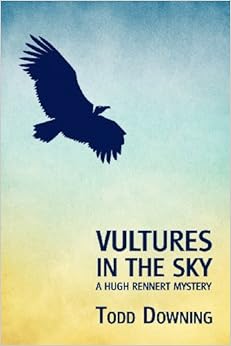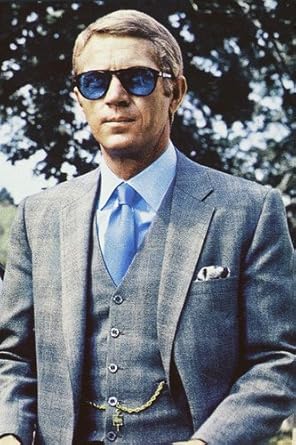My youngest son, Quentin, likes to practice Cosplay. Cosplay is a compound word created by the combination of Costume and Play (or player), and hence denotes a person who is play-acting that s/he is the character (sci/fi or anime usually) s/he is dressed as.
Cosplayers may spend hundreds of dollars on their costumes, and work diligently to achieve detailed accuracy (similar to a Civil War reenactor I once knew). And, at conventions such as this, the prizes for best costume can run into the hundreds or even thousands of dollars.
Believe it or not, there are Professional Cosplayers who earn big bucks by dressing as characters from video games, television shows, or even movies. They earn this money not only by winning cosplay contests, but also by doing work for sponsors. I suppose this shouldn't have come as a big surprise to me; after all there's a guy who frequents the cigar store, who earns a six-figure annual income by portraying Sean Connery at business conventions or on the radio. Pro Cosplayers earn money in a very similar manner.
I once posted here about an activity my youngest son, Quentin and I engaged in, last summer, called ICon ("eye-con"). At that convention, Quentin cosplayed (dressed and acted) as Edward Elric, the title character of the anime TV series The Full Metal Alchemist.
ICon was not a particularly giant convention, recalling (in my mind) the gaming conventions my older son, Joe, had attended when he was in middle school. There, Joe and his buddies played Dungeons and Dragons or other board games for several days straight.
But, ICon lasted only one full day.
The Phoenix Comicon, however, lasted four days and was held at the Phoenix Convention Center (very close to where Left Coast Crime will be held in 2016). Last year, over 15,000 people attended Comicon, and this year the numbers were believed to be even larger. Having been there, I believe it!
The Venues Included Writers!
 |
| Storm Troopers posed for free with folks. |
 |
| Quen being tossed into Batman's Arkham Asylum |
Writers and pros had booths in the underground area, where steampunk and cosplay items competed for sale against Star Trek, Star Wars and other Sci-Fi and Fantasy memorabilia.
There were also movie and TV stars galore, available for autographs (about $40 to $60 each, additional cost) or to pose in photos with you (that would set a person back a hundred or two hundred bucks each), The local Dr.Who society was on the top floor (by the stars) with their Tardis, two life-sized Daleks (one of which moved and had a suspicious-looking "Sidekick" badge taped to the front!), and a remote-control K-9. On this floor also, one could find the Delorean from Back to the
 |
| Q sits with "Greedo" on Star Wars "set" |
Cosplay filled a lot of con space also, with classes and panels that ranged from how to buy and style wigs, how to sew costumes or make realistic-looking armor that wouldn't weight you down, to panels of professional cosplayers giving tips on the contests and how to make money at cosplaying.
Membership is NOT Cheap
An adult membership for all four days cost about $97.00 (a significant savings!), while a "sidekick" ticket for a kid 12-or-under cost $10.75 for the full four days.
 |
| Lunch for 2 = $45.00 LOL |
By the time it was all said and done, I purchased two adult memberships for Thursday ($30 each) so Q wouldn't have to wear his embarrassing Sidekick badge, two adult memberships for Friday (about $47 each) so my wife could go with him in the morning while I was at work, and my older son's girlfriend could join her until I relieved my wife, three adult memberships for Saturday ($57 each) so my older son, Joe, could attend with his girlfriend and myself, while Q used his Sidekick badge (and the older kids could go to the Steampunk ball or some other adult venue that night), and an adult membership for Sunday ($35) so I could go with Quen on my day off.
COSPLAY (Hmmm.......)
 |
| A Family of Dr. Who's . . . Plus a Cyberman son .... Talk about dysfunctional teen years! LOL |
The main catalyst for our going, of course was that Quen wanted to participate in a Cosplay Contest. The problem was: Though we downloaded Comicon info from their website to our cell phones, months in advance, and that info kept updating over time, we NEVER saw anything labeled: "Cosplay Contest."
Instead, there was a "Cosplay Fasion Show" on Thursday morning, and a "Prejudging for Masquerade" at 4:00 pm on Saturday, and a "Masquerade" at a local Hotel, where the steampunk venues were being held, at 9:00 pm Saturday night.
Was the Cosplay Fashion Show a contest? Evidently not. Was "Masquerade" the contest, or was this a codeword for something dealing with steampunk? We didn't know. Nor could we find out ahead of time.
 |
| At one point, we ran into the evil "boss" from Kingdom Hearts. You can't see it, but there is a crowd jumping up and down and screaming behind me. |
To that end, for over a month, Quentin worked with my wife as she diligently followed his instructions, as well as online pics, to sew a Sora costume for him. We bought a pair of too-large shoes at Goodwill, then he and I turned them into Sora's shoes using paint, tape and paper mache. He and I constructed a "KeyBlade": Sora's primary weapon, using PVC pipe, cardboard, Styrofoam, paint, a small chain, etc. My wife even styled his hair to match Sora's.
Thursday afternoon, Q and I entered the convention, neither of us in any costume. Our plan was to orient ourselves to the premises, attend a few panels on cosplay or some other things, and form a strategy for the weekend. Unfortunately, the maps in the program, cross-indexed with the buildings we were in, didn't make sense to me. In fact, I'm embarrassed to admit that I -- an ex-SF Sergeant, known for finding my way for miles across empty and inhospitable terrain using only a map and compass -- never did quite manage to orient myself inside those buildings until the end our last day there.
 |
| It was not a stationary battle. Q is waving his keyblade as the "boss" waves his arms in attack. |
I didn't blame him. And, since he was the reason we were there, we did what he wanted to do -- while I scratched my head a lot and tried to figure out where we were on the myriad of seemingly unrelated maps inside my program.
By Thursday night, at last, I figured a few things out. So, on Friday morning, my wife, Madeleine, and our son's girlfriend, Suzanne, knew where they had to take Q for the fashion show, while I was at work. My daughter, Raven, wound up there to cheer him on, too.
 |
| Suzanne fixes Q's "Sora" hairstyle. |
front of hot lights and hundreds of people -- which I have no doubt was a good experience for him. He encountered stage fright, but dealt with it on his own --HUWAH!! I got there too late to see the show, but heard all about it from the kids. My wife went back to work, while Suzanne, Raven and I took Q back into the con. The younger folks decided to wander around together for awhile.
One panel I attended alone was called, "How to be the parent of a Comicon Nerd." Quen had protested his attendance, saying the adults on the panel would make jokes about kids in cosplay.
He couldn't have been more wrong!
From the Mouths of Babes
This panel was made up of a half-dozen kids ranging in age from about 14 to 17. The theme of their panel was essentially: "What sort of Comicon Parent are you: Supportive, Disinterested, or Abhorrent?" (Yes, they actually used the word "abhorrent." LOL)
First, each speaker explained a different facet of what a parent's comicon kid might be "into" and why it was usually "really nothing to be worried about." They covered comic books, films, TV series, online comic books (webcomics, such as Homestuck), cosplay and other things.
They stressed the idea that "forbidding" a kid to play a game or watch a show wouldn't keep that kid from playing the game or watching the show at a friend's house. Instead, they stressed open communication as the best way to address parental concerns. Finally, each kid on the panel told us what her parents were like (supportive, disinterested, or abhorrent) so that we could compare ourselves to them, and adjust our actions if need be.
I was deeply moved when the girl with two supposedly "abhorrent" parents, wiped her eyes as she told us about her dad making fun of her cosplay outfit, and of how her mother refused to drive her to the con, making her take the bus, because "...that stuff is Devil worship -- you can burn in Hell alone!" (Maybe her parents weren't really that bad, but her perception was that they were. And, the really heart-rending part, was that I could hear how much she loved her parents and wanted to connect with them.)
 |
| Some feel EMPOWERED by cosplay. |
The really eye-opening part of this program, however, was that I saw the impact of cosplay on some of these kids' lives. Several of the panel members were dressed in cosplay outfits, which surprised me at first. Later, however, a couple specifically said words to the effect of, "I'm pretty shy, and I don't ever speak up at school or anything. But, when I wear this cosplay, I can cosplay that I'm this strong character. While I'm dressed like (this character), I act like (this character) and that's what gives me the ability to speak to you in front of this room, like this. I could never do that, if I was just me."
It wasn't just what they said, either. I could see it in their mannerism; their conviction was clearly evident, as was the importance of what they were doing, and why they wanted to speak to parents about their concerns. Frankly, I wished that more than five or six parents had come to the panel. I also made sure to ask questions when it came time for Q & A: I wanted the kids to know I valued what they were doing.
And, I got to see one mother obtain relief when she asked, "Please tell me, what the heck is this Homestuck? Why is my eleven-year-old daughter going to school with gray paint on her face and hands, and orange horns on her head!?!"
All the girls on the panel, along with a few kids sitting in the audience, screamed with joy, then laughed and sighed and comforted her, assuring her that it was alright, that they had all been into Homestuck and painted themselves gray at eleven and twelve. At one point, one girl held up her arms and said, "See? No more gray paint on my face or arms. I outgrew it and she will too. It's okay. It won't hurt her. Your daughter is fine and happy." Then, they gave the mom tips, such as: "The important thing is to keep her from getting in trouble at school, by getting paint on the walls if it rubs off her hands. The way you do this is to seal with ...(I don't remember: something about baby powder and stuff -- but the mom took notes!)
I Realized:
 |
| Entrance to Cosplay Lounge. Sign for Diversity Lounge in background. |
I also realized why taking photographs inside the Cosplay Lounge was so carefully forbidden -- because cosplayers take off their costumes in there; they are naked and themselves; they have lain their defensive bulwarks to one side and are vulnerable until they gird themselves, once more, in the armor of their character.
As the kids also pointed out: People (adults and children, both) engage in cosplay or other comicon activities for hundreds of different personal reasons. Not every cosplayer is looking for a strength or defense that eludes him or her in real life. Many, like my son, Quentin, just enjoy playing the part of fictional characters -- something I do, every day, when I write. And I can understand this; I always have.
But, thanks to those brave kids, I now understand more about the genre, and the factors that may be at play in other practitioners lives.
But What About the Cosplay Contest???
 |
| Door to PreJudging Room No Entrance W/O Permission |
 |
| The hallway outside, 2.5 hours later. |
A particularly humorous encounter I witnessed at the con occurred during lunch one day. Q and I were eating, out on a sort of bench under shade, and there was a male-female couple in their late twenties not far from us. The woman dressed as a Harry Potter character insisted (for some reason, I wasn't sure) on giving her husband/boyfriend a hard time about wanting to watch World Wrestling Federation on TV at home. When the guy finally griped, "What's wrong with wrestling?" she responded, "It's completely
FAKE!" At which point, he looked at her and mumbled, "Right. And like you go to Hogwarts!"
For the Hill family, though, Phoenix Comicon and the lead-up -- gathering info, making the costume -- all of it, was a family activity. And, in the end, our family really enjoyed it. So, chalk-up a win this time!
See you in two weeks,
--Dixon































